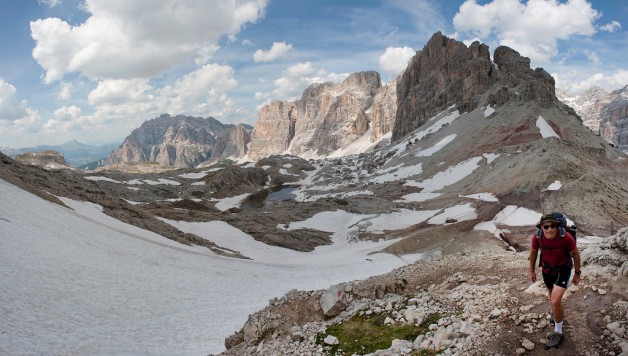Mountaineering 101: Leave The Trail Shoes Behind
As a hiker, you love the challenge of a long hike, a trail that winds up a mountain where you peer over the distant landscapes. But day hikes, or even weekend excursions don’t require the equipment, physical ability, or skills mountaineers need. While trail shoes or light boots might have been enough for you in the past, you’ll need some serious upgrades if your goal is the summit of Mt. Rainier or Denali. Here are the skills and equipment you’ll need for this endeavor.
Footwear
One of the most important pieces of equipment is footwear. Comfortable boots will make the experience more enjoyable, if not less difficult. Mountaineering boots have extreme thick and stiff soles as crampons are necessary once you must pass over snowfields and ice bridges. Mountaineering boots are insulated and waterproof as well, so your feet won’t get wet or cold. However, wool socks are also essential as high altitudes are bitterly cold. Wool is best because, unlike cotton, wool keeps you warm even when wet, and though mountaineering boots are waterproof your feet will sweat. While some mountaineers take along camp footwear for when they’re at camp, space and weight should be kept to a minimum when you consider camp boots.
Clothing
You need to stay warm when a breeze kicks up, but you also need breathable clothes so you don’t sweat through the clothes and get wet. It’s all about layers. First, you’ll need an under layer that wicks moisture away from your skin and breathes. Both wool and synthetic options can be found, though wool has been the gold standard for generations. Then a middle layer such a thick fleece or fest, followed by the outer layer like a down or synthetic parka. While you should always plan your trip around the most favorable times of year, weather-wise, good rain gear is essential no matter the forecast or time of year.
Essential Hardware
Hardware is everything from ropes and harnesses, to tents and camp stoves. While the plug-and-burn camp stove you already have probably works great for weekend trips, many of these smaller stoves don’t perform well once over 10,000 feet above sea level. A white gas camp stove, or multi-fuel stove such as the MSR WhisperLite are reliable options. Another important piece of hardware is a safety line to the outside world, in case of emergency. While smartphones are great, when on the face of a mountain, you probably won’t get service. That’s why a satellite phone is the best option if you’re faced with an emergency.
Skills
The skills you’ll need when on your trip are many. The correct knot, tied in the correct way, can be all that’s between you and a fall into a crevasse. Learn mountaineering knots like the prusik, how to rope up while harnessed in, and practice how to put prusik knots over your boots while you have crampons on. While there are many videos on the Internet that can show you the basics of these skills, the best way to learn is from an experienced mountain climber. Another important skill is that of self arrest, in which you stop your slide with an ice ax if you lose your footing on a steep face.
photo credit: Panorama Portrait, Jim Bagian via photopin (license)













